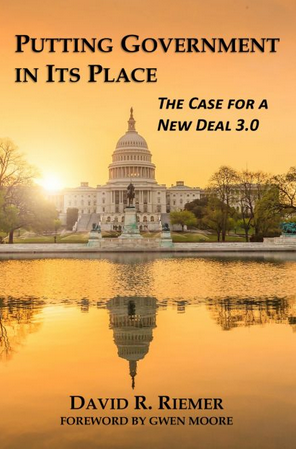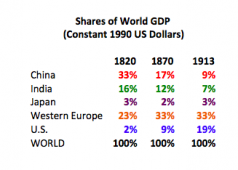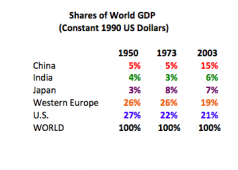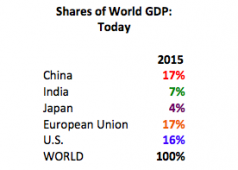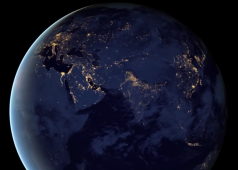Domination of the World Economy
The United States dominated the world's economy from 1945 to 1975.
One of the fight songs of Columbia University ends with this verse:
"Oh, who owns New York? Oh, who owns New York? Oh, who owns New York, the people say.
"Why, we own New York! Why, we own New York! C..O..L..U..M..B..I..A."
It can equally be said, with no trace of braggadocio, that the United States virtually owned the world’s economy from 1945 onward.
Western Europe was in ruins, with its big economies a wreck. Germany had been flattened by bombs and invasion, then divided in two and occupied by its conquerors. Triumphant England had been badly bombed; it owed huge debts to the U.S.; and its empire was vanishing, thanks in part to U.S. pressure. France and Italy suffered from intense political conflict; Spain and Portugal languished under dictators; Greece was torn apart by civil war. The notion of a single, powerful European market was just a dream in Jean Monet’s sleep.
To the east, the Soviet Union (while strong militarily) posed no economic challenge. The Soviet satellites in Eastern Europe likewise amounted to a blip in the world’s economy. Further east, the economic powerhouses of today's Asia—China, India, Singapore, South Korea, and Taiwan—were still emerging as independent nations. Ravaged by war or suppressed by inefficient central planning, their economies posed no threat to America’s. If you had talked about products “Made in China” in the 1950s, 1960s, or 1970s, no-one in the US. would have a clue about what you were talking about. The only thing made in China that sold abroad was Chairman Mao’s “Little Red Book.”
Japan, too, had been leveled by bombs, culminating in the destruction of Hiroshima and Nagasaki. It would take decades for Japan to start competing with the U.S. Even into the 1960s, products “Made in Japan” were more likely to be mocked than feared. Japan then sold us junky radios that fell apart. High-tech Toyotas and Hondas, with their superior maintenance and fuel efficiency, remained on the horizon.
Finally, neither Mexico, nor the republics of South America, nor the new nations of Africa provided any competition. When U.S. manufacturers in the 1950s or 1960s moved their production to obtain cheaper labor, they moved from Massachusetts and Rhode Island to North Carolina and Georgia—not to Chihuahua or Monterrey.
In short, America’s only serious economic competition came from Canada (which many Americans think of as part of the U.S. anyway). In addition, trade barriers impeded what foreign commerce there was. The world had not returned to the ruinous tariffs of Smoot-Hawley, but tarriff-free international trade was still a long way in the future.
The United States' near-total dominance of the globe's economy was abnormal. It could not last. It was only a matter of time before the world's other nations found their footing and began to compete, often aggressively, with America.
For centuries before the Pilgrims landed on Plymouth Rock, China and India had powerful economies. In the 19th century, the nations of western Europe emerged as economic giants. In the early 20th century, Japan began to grow in economic as well as military strength.
It was inevitable that, as the trauma of World War II receded, some of these societies--as well as newcomers like Singapore, South Korea, and Taiwan--would rise up to play a major economic role on the world's stage. They first needed to create an adequate framework of political stability (if not democracy), build a strong infrastructure, and create the market mechanisms necessary to manufacture goods and generate financial (and other) services of low cost and high quality.
Once so positioned, the nations of Europe and Asia from the mid-1960s onward steadily succeeded in attracting U.S. customers and investment, aided by America's increasingly open market. These nations' own economic needs (despite trade barriers) also provided opportunities to sell American products and services.
The new balance of economic forces spelled an end to the United States' colossal economic dominance of the world economy. The "old normal" is gone. It would be foolhardy to imagine that anything other than today's "new normal" will continue well into the 21st century
